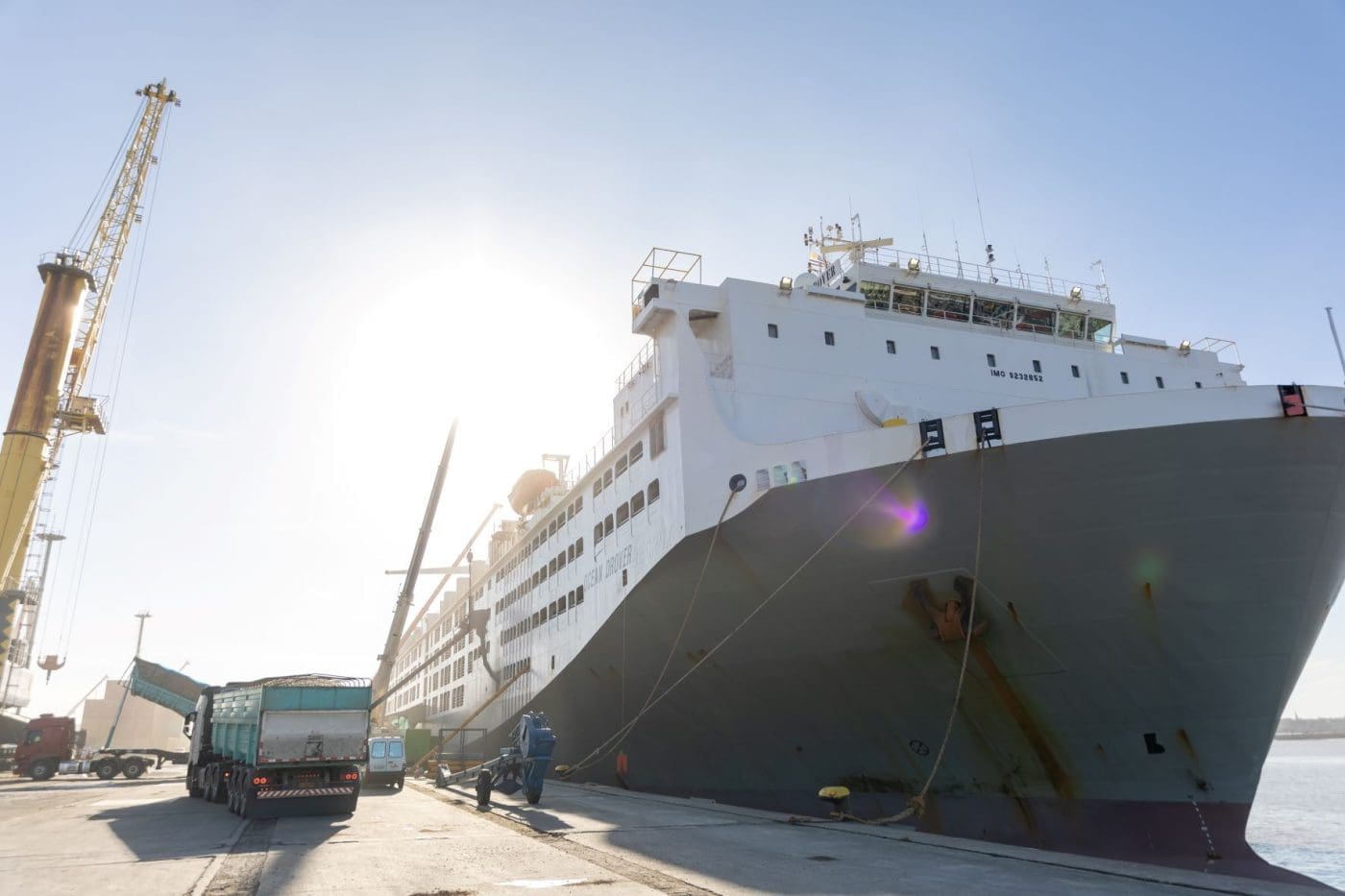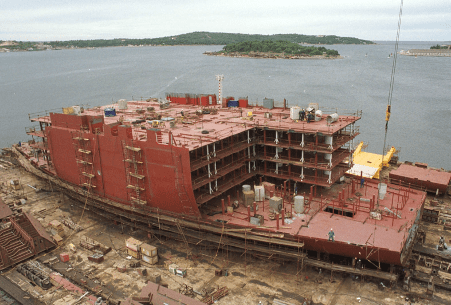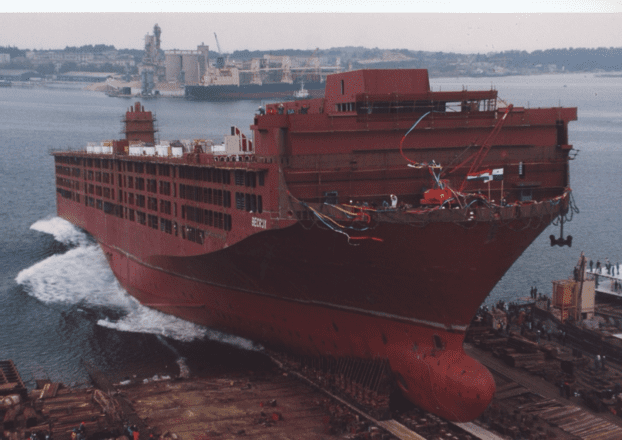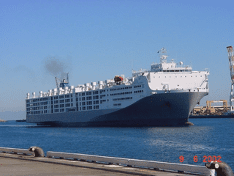LAUNCHED twenty years ago as the M/V Becrux, the M/V Ocean Drover, as it was renamed in 2009, was the first large livestock vessel designed from the ground up to carry livestock.
Described as the “workhorse” of the Wellard livestock shipping fleet, the Drover has just completed its 200th voyage, carrying 14,000 cattle on a 31 day journey from Uruguay to China.
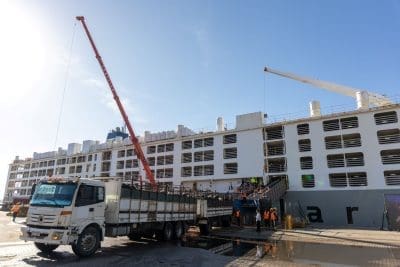 The trip was completed with only 7 mortalities. Across 200 voyages the vessel has recorded a succesful delivery rate of 99.3 percent for sheep and 99.9pc for cattle.
The trip was completed with only 7 mortalities. Across 200 voyages the vessel has recorded a succesful delivery rate of 99.3 percent for sheep and 99.9pc for cattle.
Since being launched in 2002, the Ocean Drover has transported 1.7 million cattle and 5.1 million sheep, travelling over 2 million nautical miles or 3.7 million km – equivalent to 9.7 trips to the moon or 93 circumnavigations of the globe.
The Ocean Driver remains one of only two large vessels through to today to be purpose-built.
Wellard Executive Chairman John Klepec said the M/V Ocean Drover had continuously proven that large numbers of livestock can be safely delivered large distances in excellent condition.
“It is fitting that the vessel’s 200th voyage was a very successful long haul voyage with breeding cattle from Uruguay to China,” Mr Klepec said.
“The amount of inquiry we receive from exporters requiring the M/V Ocean Drover to transport high-value livestock over long distances is a demonstration of the confidence they have that the vessel will complete the voyage safely and efficiently, and that their cattle will disembark in excellent condition.”
In addition to long haul voyages the Drover has also transported large numbers of cattle from Australia to South East Asia, particularly during periods of high cattle turnoff.
Mr Klepec said it was important to recognise the contribution that every crew member who has sailed on the ship had made to its success.
The M/V Ocean Drover’s voyages have included destination ports in Jordan, Saudi Arabia, Malaysia, Indonesia, Mexico, Oman, Qatar, Bahrain, United Arab Emirates, Kuwait, Israel, Philippines, Lebanon, Vietnam, China, Turkey, Pakistan, Egypt and Russia.
It has loaded sheep, cattle and goats from the Australian ports of Townsville, Darwin, Wyndham, Broome, Geraldton, Fremantle, Adelaide, Geelong, and Portland, as well as in the United States, Uruguay, Portugal, Colombia and New Zealand.
Mr Klepec said the large number of load and destination countries serviced by the M/V Ocean Drover in its first 200 voyages demonstrated the importance of the live export trade with respect to global price competition for livestock producers as well as food security and/or genetic progress for importing countries.
At the time of its launch, the M/V Ocean Drover set new standards of ventilation, feed and water systems – standards which remain at the upper end of the industry to this day.
Subsequent vessels built by Wellard, the mid-sized M/V Ocean Swagman and M/V Ocean Outback (now M/V Bahija) and the M/V Ocean Shearer (now M/V Al Kuwait) were all based on the highly successful concept of the M/V Ocean Drover.
“I still love her like a daughter”
The Ocean Drover was the brainchild of marine architect and former Wellard CEO Mauro Balzarini.
Here he reflects on the genesis of a ship that was at the time the world’s largest purpose-built livestock carrier:
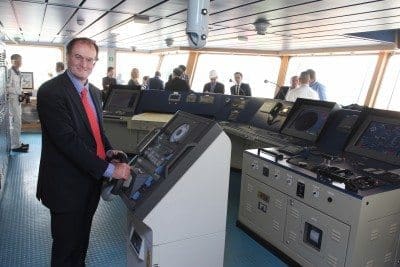
Mauro Balzarini at the helm of the Ocean Shearer (now the Al Kuwait) when it was launched in China 2016.
So, the Becrux (I love this name better than the current Ocean Drover) turns 200 … not years but voyages!
Indeed, this iconic ship has performed an amazing 200 voyages carrying 1.8m cattle and 5.1m sheep, with an outstanding performance in terms of animal welfare achievements and has made a significant mark on the industry.
Like any icon, it carries a charisma and it is interesting to know the genesis.
The vessel was not built by Wellard but by Siba and its team in Italy.
It is my brainchild and I still love her like a daughter.
I remember drafting the general arrangement plan in a single sleepless night by hand (no computer back then…) and then developing the design with Mr. Accornero. He is an extremely talented engineer who had also worked with me on other newbuildings each one a step forward in term of animal welfare.
It was not my first new build , but was the first ship of that size built from scratch for cattle and sheep with no double tiers.
I knew that that system was wrong. We went for a full 23,000 square meters of cattle space, and sheep would be travelling on the same 2.3mt high decks for the most comfortable of rides.
We introduced many innovations, including the ventilation system, which I based on the amount of air, rather than air changes as it was custom them, and that concept later inspired the PAT now in use as a standard.
The ship was such an advancement with technical innovations that even my father Emilio, the chairman of Siba, was sceptical of, and on the day of the signing of the contract he thought it was best for me to sign it and take full responsibility.
The ship cost US$33.5 million, an astronomical amount at that time, and it took two years and a lot of argument to build, the yard did a great job as you can see she is now an old lady but she is still in business.
Another interesting anecdote: The day of the launching, standing on the slipway waiting for the ship to slide into the sea, my father and Peter Vroon, two icons of the trade, took me on the side and told me: “Boy this big thing will never find a profitable employment to depreciate the investment”.
I was obviously concerned but pushed ahead and thank God they were both wrong. That day is also memorable because my late mum was the Godmother and she broke the champagne bottle on the hull at the first stroke.
The Becrux was not only innovative from a technical point of view but also commercially.
I remember the day I was having a meal with Scot Braithwaite in Jakarta and I suggested to him we could do 20,000 head shipments from Australia to Indonesia when the average at that time was 2,500. He was silent for a minute or two and then said “why not!” and so we began and after an uphill start Scot and I loaded many big shipments to SEA, each one a great success.
It was not all smooth sailing, she had her ups and downs; the first trip was not good and then the fire in Freemantle, but like a true champion she always came back stronger than before. I think that if each ship would have carried the same innovative spirit, the industry would have not gone through some of the dramas they have had and we would not have been talking about banning live exports.
Mauro Balzarini.

